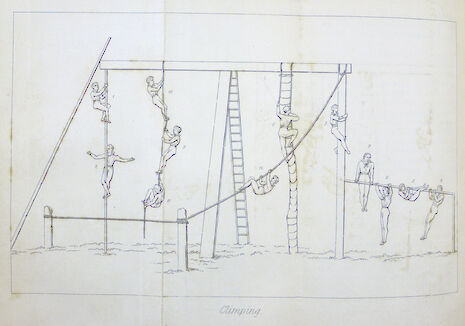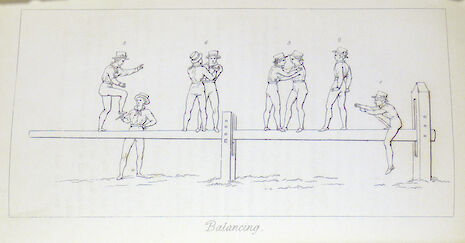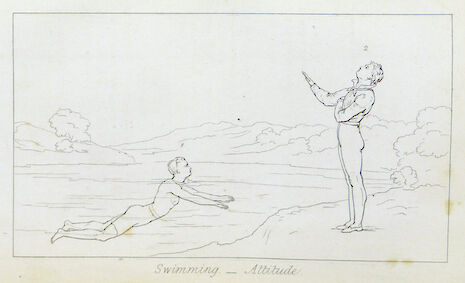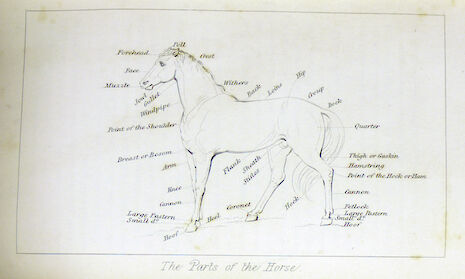19th-century ‘Manly Exercises’ guide found in St John’s College
The guide advises its readers to drink only cider and cold beer and to walk up to 24 miles a day

The fitness guide for the ‘manly gentleman’, was recently unearthed in the archives of St John’s college, claiming to get them “on their way to a summer body.”
Avoiding vegetables, drinking half a pint of wine after dinner every day and walking up to 24 miles a day, are just a few of the instructions in the guidebook by Donald Walker, on how Georgian men should stay trim.
Researchers at the college say the fitness manual from 1834 was aimed at middle and upper class readers whose sedentary lifestyles and high-fat diets left them at risk of health problems such as gout and obesity.

From leaping and wrestling to skating and vaulting, exercise is encouraged in order to reap the benefits of leading a longer and happier life.
A spokesperson for St John’s College said a lot of the health concerns in the manual still ring true today.
"Even in the 1830s, there was plenty of discussion about obesity, fad dieting, the relationship between exercise and mental wellbeing, and the fact that technology might be making us all a bit lazier." he said.
Although Walker gives a fascinating insight into 19th century attitudes to exercise, other dietary advice is more questionable.
The manual advises gentlemen to drink cider and cold beer exclusively in order to be of “the highest condition”, avoiding all other liquids apart from a half pint of red wine after dinner.
Alongside the regular alcoholic beverages and 20 to 24 miles of walking and running a day, Walker recommends a diet consisting of lean meat, stale bread and biscuits, and rules out all vegetables, saying that “everything inducing flatulence must be carefully avoided.”

Like all successful exercise manuals, Walker’s guide comes with stellar user reviews and recommendations by “professional men”. The author attributes the diet to the widely celebrated pedestrian, Captain Barclay, most famous for walking 1000 miles in 1000 hours in 1809.
The manual, which claims to be the first to describe rowing and sailing as exercise, outlines instructions on how to exercise “with a direct, immediate and obvious purpose.”
Walker distinguishes his manual from other popular 19th century medicine available at the time, which often contained poisons and opiates: “All exhibitionary and quackish preparatory exercises, as they are termed, are here excluded ... no tick-tack, cross-touch, kissing the ground, goats jump, spectre's march etc.”
It appears to have been part of a series of practical guides by the author, who advertised in the work a forthcoming manual on literary composition, in order to aid his readers in everyday letter-writing.

The manual also comes with a very 19th-century dollop of xenophobia: Walker sniffily compares the civilised British boxing technique with the European style, writing that “On the continent, they have admitted not only what has here been deemed more or less unfair, but what is positively so, as well as what is unseemly and disgusting.”
The book has been kept in the college’s Gatty collection and is available for viewing by appointment.
 News / SU reluctantly registers controversial women’s soc18 December 2025
News / SU reluctantly registers controversial women’s soc18 December 2025 News / CUP announces funding scheme for under-represented academics19 December 2025
News / CUP announces funding scheme for under-represented academics19 December 2025 Features / Should I stay or should I go? Cambridge students and alumni reflect on how their memories stay with them15 December 2025
Features / Should I stay or should I go? Cambridge students and alumni reflect on how their memories stay with them15 December 2025 Fashion / The art of the formal outfit 18 December 2025
Fashion / The art of the formal outfit 18 December 2025 News / Dons warn PM about Vet School closure16 December 2025
News / Dons warn PM about Vet School closure16 December 2025









